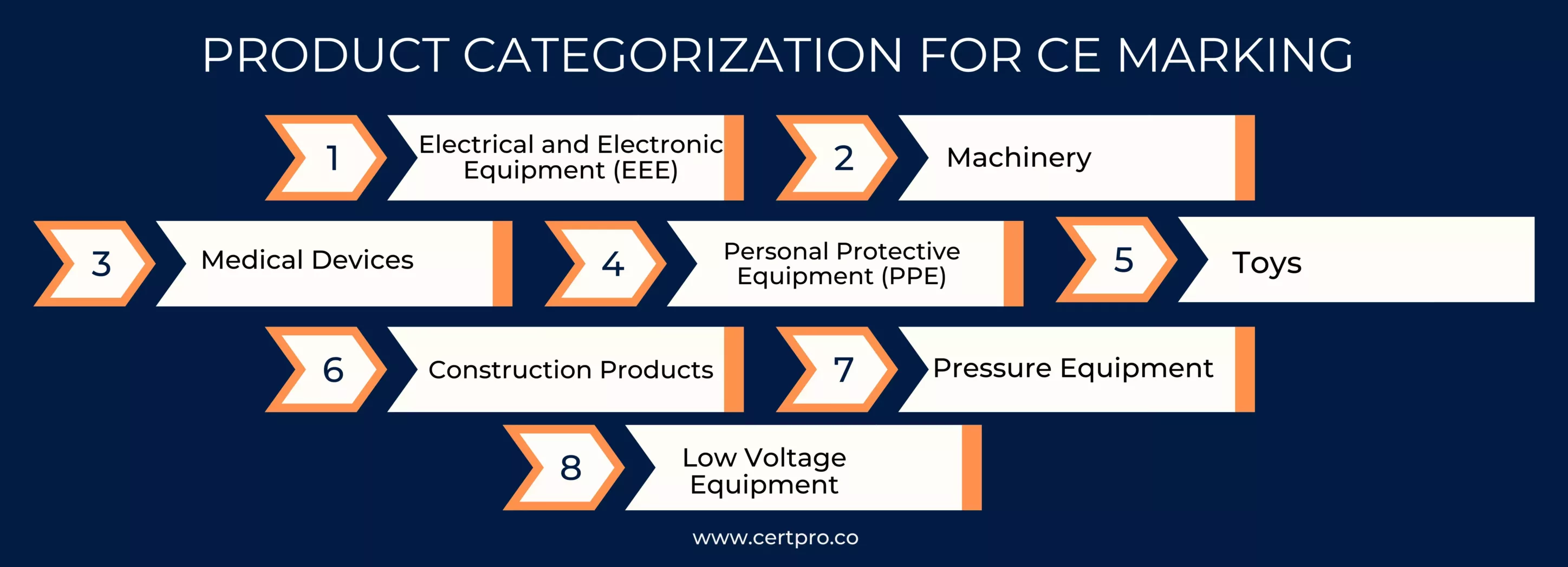In an increasingly interconnected global marketplace, the safety and quality of consumer goods are of paramount importance. The CE marking, a symbol familiar to many, serves as a crucial indicator of a product’s conformity to essential health, safety, and environmental requirements within the European Economic Area (EEA).
The purpose is to harmonize product standards across EU member states, ensuring a high level of protection for consumers and the environment. It signifies that a product meets the essential requirements outlined in relevant EU directives or regulations.
In this article, we will delve deeper into the significance of the CE mark, explore the legal framework underpinning its implementation, and shed light on the process that manufacturers must undergo to affix this vital symbol. Understanding the importance of the CE mark not only empowers consumers to make informed choices but also underscores the shared commitment of businesses and authorities towards ensuring product safety and consumer welfare.
WHAT IS CE MARKING AND ITS IMPORTANCE?
The CE certification mark, which attests to a product’s compliance with EU rules and regulations, is used to identify products as meeting these standards. The term “Conformité” is denoted by the letter “CE”. The letters “CE” stand for “Conformité Européenne,” which translates to “European Conformity” in French. Products that carry the CE mark meet the specific standards and conformity assessment procedures outlined in relevant EU directives or regulations.
CE mark requirements on products intended to be sold or distributed in the European Economic Area (EEA), which includes the 27 EU member states as well, It serves as a visible indication that the product has undergone a conformity assessment process, ensuring its compliance with the necessary safety, quality, and environmental protection standards set by the EU. The importance of marking CE lies in its significance for manufacturers, consumers, and regulators within the European Economic Area (EEA) and beyond.
There are key reasons why the CE mark is crucial:
1. Market Access: It grants manufacturers access to the vast EEA market, which includes over 500 million consumers. Without the CE mark, products may face market entry barriers and restrictions within the EEA.
2. Compliance with EU Regulations:It guarantees that goods comply with the fundamental safety, health, and environmental standards established by EU directives and laws. It ensures that products are safe for consumers and users, reducing the risk of accidents, injuries, and health hazards.
3. Consumer Safety & Confidence: It enhances consumer safety by indicating that products comply with stringent EU standards. Consumers can make informed choices when purchasing CE-marked products.
4. Harmonization & Free Movement of Goods: It harmonizes product standards across EU member states, eliminating technical barriers to trade and facilitating the free movement of goods within the EEA.
REQUIREMENTS OF CE MARKING
Products sold or supplied in the European Economic Area (EEA), which consists of all 27 EU member states as well as Iceland, Liechtenstein, and Norway, must have the CE mark.
The CE marking requirements for a product are as follows:
1. Determine Applicability: The first step is to determine whether your product falls under the scope of CE marking requirements. Toys, medical gadgets, machinery, electrical equipment, and personal protective equipment are just a few examples of things that must fulfill the CE mark requirements on products.
2. Identify Relevant Directives: Identify the specific EU directives or regulations that apply to your product. Each product may fall under one or more directives, and it is essential to identify all relevant ones.
3. Conformity Assessment: Depending on the product’s risk category, you must choose the appropriate conformity assessment procedure. This involves determining whether the product requires self-certification or the involvement of a notified body for testing and certification.
4. Technical Documentation: Prepare technical documentation that demonstrates the product’s compliance with the relevant requirements. This Documentation includes product specifications, design drawings, test reports, risk assessments, and conformity assessment documentation.
5. Declaration of Conformity: Issue a Declaration of Conformity stating that your product complies with all applicable EU directives or regulations. This declaration is a formal document that accompanies the product.
6. Affixing the Mark: Once your product successfully undergoes the conformity assessment and meets the requirements, you can affix the mark to the product and its packaging.
7. Ongoing Compliance: Ensure continuous compliance with the relevant EU directives or regulations throughout the product’s lifecycle. Monitor changes in regulations and standards to maintain compliance.
It’s crucial to remember that CE marking requirements and procedures can change based on the specific product category and relevant directives.

PRODUCT CATEGORIZATION FOR CE MARKING
CE mark requirements on products include a wide range of goods that are intended to be sold or distributed in the European Economic Area (EEA). The classification aids in identifying the pertinent specifications, conformity assessment techniques, and final CE process grade.
Products in the following categories require the CE mark:
- Electrical & Electronic Equipment (EEE): EEE, such as household appliances, IT equipment, and medical devices, requires a mark of Certification for electrical safety and electromagnetic compatibility.
- Machinery: Machinery and equipment must meet certification marking requirements for safety and risk prevention.
- Medical Devices:Medical devices, ranging from simple bandages to complex life-supporting equipment, require certification marking to ensure patient safety.
- Personal Protective Equipment (PPE): PPE, including helmets, gloves, and safety clothing, must comply with CE standards for protecting users from risks.
- Toys:Toys undergo rigorous CE testing to ensure child safety and compliance with toy safety standards.
- Construction Products: Construction materials and products, like steel structures or building insulation, must meet certification marking requirements for structural safety.
- Pressure Equipment: Products under pressure, like gas cylinders and boilers, require marking to ensure pressure safety.
- Low Voltage Equipment: Electrical equipment operating at voltages between 50 and 1000 volts AC or between 75 and 1500 volts DC falls under the scope of the Low Voltage Directive (LVD).
It’s essential for manufacturers and importers to identify the correct product category and the applicable directives to ensure compliance with CE marking requirements. Each directive specifies the essential requirements, conformity assessment procedures, and documentation needed to obtain the CE mark for the product in that particular category.

CE MARKING’S IMPACT ON INTERNATIONAL TRADE
The CE marking has had a transformative impact on international trade, serving as a powerful and indispensable mechanism that not only facilitates access to the European Economic Area (EEA) market but also enhances the competitiveness of products globally.
The CE mark grants manufacturers unparalleled access to the vast and lucrative EEA market, which comprises 27 EU member states along with Iceland, Liechtenstein, and Norway. By obtaining this mark, businesses can circumvent barriers to trade and gain unrestricted access to a market boasting over 500 million consumers. Beyond the EEA borders, the CE mark enjoys broad recognition and acceptance in many countries worldwide. Its reputation as a symbol of quality compliance resonates with international consumers and businesses alike. As a result, products bearing the CE marking gain a competitive advantage in global markets, enhancing their market recognition and export potential.
In conclusion, the CE marking’s profound impact on international trade lies in its ability to open doors to the vast EEA market, harmonize product standards, instill consumer confidence, and enhance the global competitiveness of products.
FAQ
What is the CE mark, and why is it required for certain products?
It indicates compliance with EU safety standards. It is required for products such as electrical equipment, machinery, medical devices, toys, and PPE to ensure consumer safety and access to the European market.
How do I determine if my product needs a CE mark?
Check the relevant EU directives for your product category. If your product falls within the scope of these directives, a CE mark is required for its sale within the European Economic Area (EEA).
Can I use the CE mark for products sold outside the EEA?
It is specific to the EEA market, but it can enhance your product’s reputation globally as many countries recognize it as a symbol of compliance with safety and quality standards.
How long is the validity of the CE mark once it is obtained?
It does not have an expiration date. Once obtained, it remains valid as long as the product continues to comply with the relevant directives and regulations.
Can a third-party organization help with the CE mark process?
Yes, third-party organizations, known as notified bodies, can be involved in the conformity assessment process for certain product categories.

About the Author
BENEDICT ESSANDOH
Benedict Essandoh, CertPro’s Regional Director in Ghana, is a compliance and ISO standards expert. Specializing in health and safety, he conducts audits, implements ISO 9001 and ISO 45001, and excels in accident investigation and site inspections, ensuring international standards are met.
HOW DOES THE NIST CYBERSECURITY FRAMEWORK FUNCTION, AND WHY IS IT IMPORTANT?
Emerging cyber threats make cybersecurity an essential consideration for organizations handling and managing data. In this regard, the NIST cybersecurity framework applies to improving your cybersecurity program. It is a set of guidelines that helps improve your...
UNDERSTANDING ISO 42001: A GUIDE FOR RESPONSIBLE AI MANAGEMENT SYSTEMS
The invention of artificial intelligence (AI) has changed the operational processes of many industries. However, the rapid growth of technology increases ethical, security, and privacy-related concerns. Therefore, the International Organization for Standardization...
EUROPEAN UNION’S ARTIFICIAL INTELLIGENCE ACT: HOW THIS GROUNDBREAKING LAW AFFECTS YOUR BUSINESS
Nowadays, Artificial Intelligence (AI) is transforming our lives exceptionally well. AI is now streamlining healthcare services, providing virtual assistance, and fulfilling queries. Technologies have boons and curses. Similarly, AI creates many concerns about...




